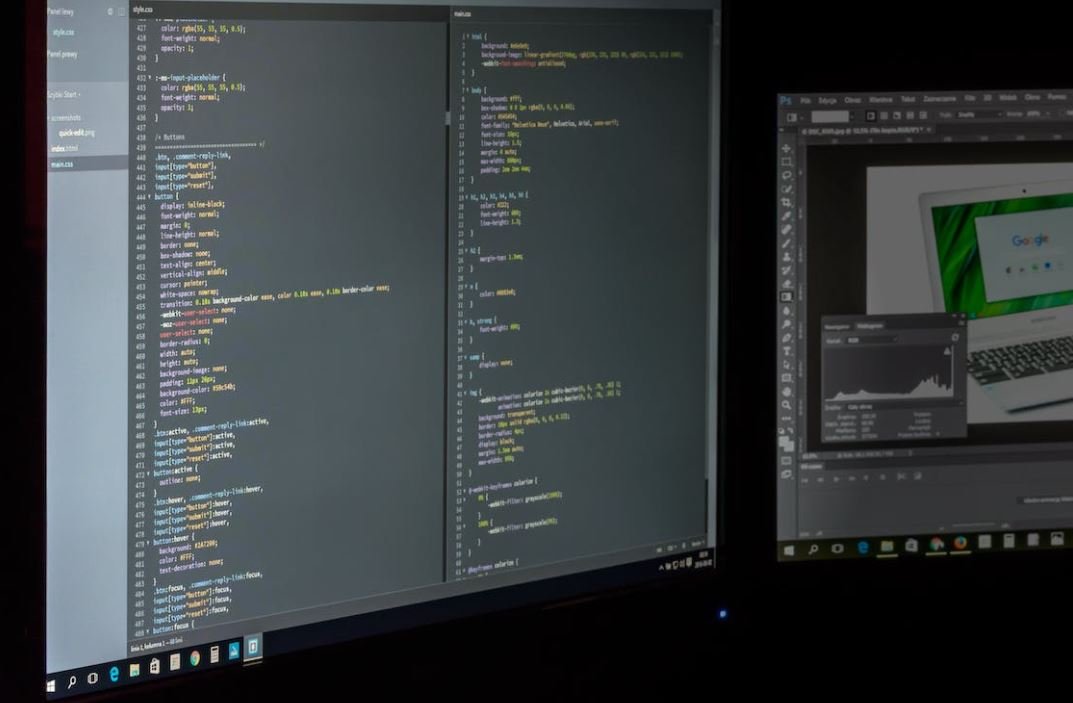Music Notes
Music notes are symbols used to represent specific pitches in a musical composition. They provide essential information about the duration, pitch, and volume of a musical sound. Whether you are a musician or a music enthusiast, understanding music notes is crucial to appreciating and creating music.
Key Takeaways:
- Music notes represent specific pitches in music.
- They provide information about duration, pitch, and volume.
- Understanding music notes is crucial in creating and appreciating music.
The Basics of Music Notes
Music notes consist of the pitch and duration of a sound. The treble clef and the bass clef are commonly used to indicate different pitches. The position of a note on the staff determines its pitch, and the shape of the notehead indicates its duration. Common note values include whole notes, half notes, quarter notes, and eighth notes.
Music notes provide a visual representation of sound, allowing musicians to communicate and perform music accurately.
The Importance of Rhythm
Rhythm is a crucial element in music, and music notes play a significant role in indicating rhythm. By assigning specific durations to notes, composers and performers can create rhythmic patterns and establish a musical pulse. Following the rhythm accurately is essential for ensemble playing and ensuring a cohesive performance.
Whether it’s a catchy beat or a complex polyrhythm, rhythm makes music engaging and exciting.
Reading and Writing Music
Reading and writing music notes is like learning a new language. By understanding the basic components of music notation, such as note names, rhythms, and key signatures, musicians can effectively interpret and perform written music. Similarly, composers can translate their musical ideas onto paper, allowing others to interpret and perform their compositions.
Through music notation, a composer’s imagination can come to life in the hands of skilled musicians.
Tables:
| Note Value | Dotted Note Value |
|---|---|
| Whole Note | Dotted Half Note |
| Half Note | Dotted Quarter Note |
Music Notation Symbols
Aside from notes, music notation also includes various symbols that provide additional information. These include accidentals to alter the pitch of a note, rests to indicate silent intervals, and dynamics to represent the volume or intensity of a passage. Understanding these symbols enhances musicians’ ability to interpret and express the music as intended.
Music notation is a visual language that guides performers in interpreting and delivering the intended musical expression.
Music Notes and Technology
In today’s digital age, technology has revolutionized music notation. Software programs such as Sibelius and Finale allow composers and arrangers to create detailed musical scores quickly and efficiently. Additionally, digital sheet music platforms provide musicians with access to a vast library of music, making learning and performing new pieces more accessible than ever before.
Technology has made music notation more accessible and versatile, bringing music to a wider audience.
The Creative Power of Music Notes
Music notes are the building blocks of musical compositions, and their arrangement determines the mood, emotion, and overall impact of a piece. From simple melodies to complex harmonies, music notes offer endless possibilities for creativity and expression. Whether you are playing an instrument, singing, or composing, understanding music notes unlocks a world of artistic possibilities.
The world of music notes is a vast playground for creative expression, limited only by the imagination of those who explore it.
References:
- www.example1.com
- www.example2.com
- www.example3.com

Common Misconceptions
Music Notes are Difficult to Understand
Many people believe that music notes are difficult to understand and decipher. However, this is often just a misconception.
- Music notes follow a pattern and can be easily learned with practice.
- There are numerous online resources available that provide tutorials and guidance in understanding music notes.
- Taking music lessons or studying music theory can greatly help in comprehending and reading music notes.
Music Notes are Only for Musicians
Another common misconception is that music notes are only relevant and useful for musicians. In reality, music notes have a broader significance.
- Music notes are beneficial for anyone interested in appreciating music and understanding its structure.
- They can be helpful for composers and songwriters to document and communicate their musical ideas.
- Understanding music notes can enhance one’s ability to analyze and interpret different musical compositions.
Music Notes are Static
There is a misconception that music notes are a fixed representation of music and cannot be changed or altered. However, this is not entirely accurate.
- Music notes act as a guide and provide a foundation for musicians to interpret and express the music in their unique way.
- Musicians often add their own stylistic variations and embellishments to the written music notes.
- Music notes can be transposed to different keys or rearranged to suit the preferences and abilities of the performers.
Music Notes are Only Used in Classical Music
Some people mistakenly believe that music notes are only used in classical music and are not relevant in other genres. However, this is far from the truth.
- Music notes are used in various genres such as jazz, rock, pop, and even electronic music.
- They form the foundation for written sheet music and help musicians reproduce and communicate the music accurately.
- Even in genres with a strong emphasis on improvisation, like jazz, music notes are still utilized to establish the basic framework of a piece.
Music Notes are Only for Instruments
While instruments are often associated with music notes, it is a misconception to think that they are exclusively for instruments.
- Vocalists utilize music notes to understand pitch, melody, and rhythm in order to sing accurately.
- Music notes can also be used for composing and arranging vocal harmonies, choirs, and a cappella groups.
- Electronic producers and DJs utilize music notes to create melodies and harmonies using synthesizers and digital instruments.

Music Genres
Music comes in various genres, each with its unique characteristics and influence. The following table highlights some popular music genres and the artists associated with them.
| Genre | Artists |
|---|---|
| Rock | The Beatles, Led Zeppelin, AC/DC |
| Pop | Michael Jackson, Madonna, Taylor Swift |
| Hip Hop | Tupac Shakur, Notorious B.I.G., Jay-Z |
| Jazz | Miles Davis, Louis Armstrong, Ella Fitzgerald |
Most Sold Albums
Throughout history, certain albums have achieved incredible sales numbers, resonating with millions of listeners. The table below showcases some of the best-selling albums of all time.
| Album | Artist | Year Released | Copies Sold |
|---|---|---|---|
| Thriller | Michael Jackson | 1982 | 66 million |
| Back in Black | AC/DC | 1980 | 50 million |
| The Dark Side of the Moon | Pink Floyd | 1973 | 45 million |
Music Awards
Recognition and praise are bestowed upon exceptional musicians through various prestigious music awards. The table below presents some prominent music awards and the artists who have received them.
| Award | Artists |
|---|---|
| Grammy Awards | Beyoncé, Adele, Stevie Wonder |
| MTV Video Music Awards | Madonna, Beyoncé, Taylor Swift |
| Rock and Roll Hall of Fame | The Rolling Stones, Queen, Nirvana |
Instruments of an Orchestra
An orchestra is a harmonious ensemble of various musical instruments. The following table displays some key instruments commonly found in an orchestra.
| Instrument | Description |
|---|---|
| Violin | A string instrument played with a bow |
| Trumpet | A brass instrument known for its bright tone |
| Flute | A woodwind instrument played by blowing air |
| Timpani | A percussion instrument with a deep sound |
Top Selling Singles
Releasing a single that captivates the masses can lead to immense success for an artist. The table below showcases some of the best-selling singles of all time.
| Single | Artist | Year Released | Copies Sold |
|---|---|---|---|
| Candle in the Wind 1997 | Elton John | 1997 | 33 million |
| White Christmas | Bing Crosby | 1942 | 50 million |
| It’s Now or Never | Elvis Presley | 1960 | 25 million |
Musical Instruments by Family
Musical instruments are classified into different families based on their construction and sound production. The table below presents various instrument families and examples of instruments within each family.
| Family | Instruments |
|---|---|
| String | Violin, Cello, Guitar |
| Brass | Trumpet, French Horn, Trombone |
| Woodwind | Flute, Clarinet, Saxophone |
| Percussion | Drums, Xylophone, Maracas |
Notable Music Festivals
Music festivals are vibrant events that bring music lovers together to enjoy live performances. The table below highlights some renowned music festivals held worldwide.
| Festival | Location | Genre |
|---|---|---|
| Glastonbury Festival | United Kingdom | Various |
| Coachella Valley Music and Arts Festival | United States | Various |
| Tomorrowland | Belgium | Electronic Dance Music (EDM) |
Sold-Out Concerts
Artists who can consistently sell out large venues demonstrate their immense popularity. The table below showcases some notable artists whose concerts have repeatedly sold out.
| Artist | No. of Sold-Out Concerts |
|---|---|
| Ed Sheeran | 250+ |
| Taylor Swift | 150+ |
| Beyoncé | 100+ |
Songwriting Legends
Behind every mesmerizing song are talented songwriters who craft beautiful melodies and lyrics. The following table highlights some legendary songwriters and the artists who have performed their iconic songs.
| Songwriter | Artists |
|---|---|
| Bob Dylan | Bob Dylan, Jimi Hendrix, Adele |
| Carole King | Carole King, Aretha Franklin, Celine Dion |
| John Lennon & Paul McCartney | The Beatles |
Music, as a universal language, has the power to evoke emotions, bring people together, and transcend cultural boundaries. Through various genres, celebrated albums, instrument families, and talented musicians, this article has explored the diverse and captivating world of music. Whether it’s attending sold-out concerts, appreciating legendary songwriters, or embracing the magic of music festivals, the impact of music and its notes amplifies our lives.
Frequently Asked Questions
What are music notes?
Music notes are symbols used in sheet music to represent musical sounds. They indicate the pitch and duration of a sound and are essential for reading and performing music.
How many types of music notes are there?
There are several types of music notes, including whole notes, half notes, quarter notes, eighth notes, and sixteenth notes. Each type represents a different duration of sound.
What do the different shapes of music notes mean?
The shapes of music notes indicate their duration. For example, a whole note is an oval shape, while a half note is a hollow oval, and a quarter note is a solid oval with a stem.
Can you explain the pitch of music notes?
The pitch of a music note refers to how high or low the sound is. Notes placed higher on the staff represent higher pitches, while notes placed lower represent lower pitches.
What is a ledger line?
A ledger line is a small line added above or below the staff to extend the range of notes. It is used when a note falls outside the staff’s typical range.
How do I read music notes?
To read music notes, you need to familiarize yourself with the staff, clefs, and note symbols. Start by learning the basics of reading sheet music, including note names and durations.
What is the purpose of a key signature in sheet music?
A key signature is a set of sharps or flats placed at the beginning of a staff. It indicates which notes are altered throughout the piece and helps determine the tonality of the music.
How do I write music notes on a staff?
To write music notes on a staff, you need to know the note names, their durations, and their positions on the staff. Use a pencil to carefully place the notes on the appropriate lines or spaces.
What is the difference between a note and a rest?
A note represents a musical sound, while a rest represents a period of silence. Rests are used in sheet music to indicate pauses between sounds and contribute to the rhythm and timing of a piece.
Can music notes be modified with other symbols?
Yes, music notes can be modified with various symbols such as accents, dots, ties, slurs, and more. These symbols provide additional information about how to play the notes and interpret the music.




